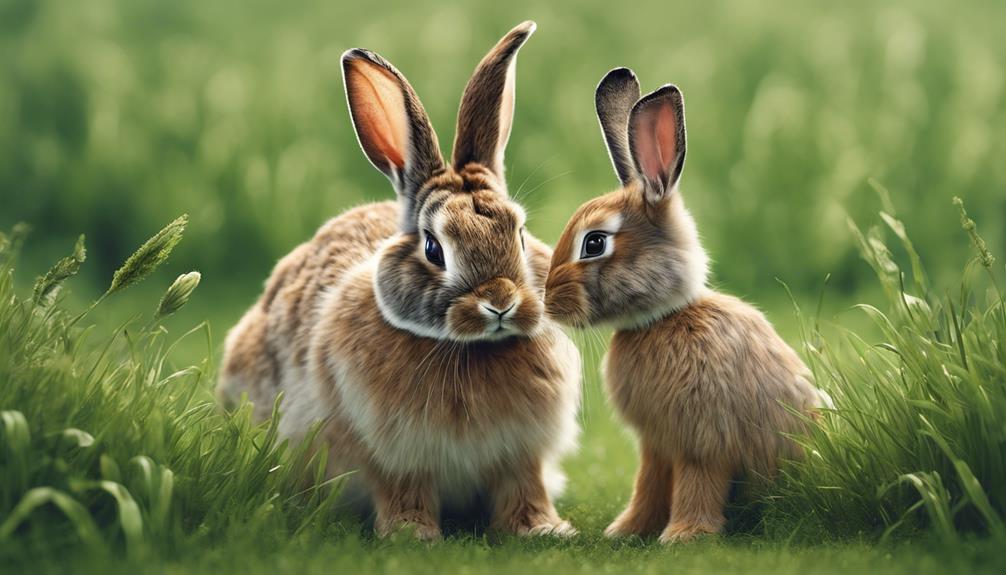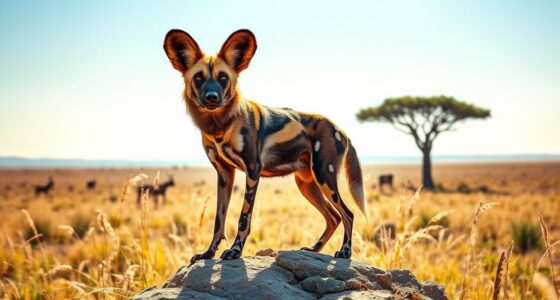When examining bunnies, rabbits, and hares, we can see clear disparities in their backgrounds, physical characteristics, behaviors, and ability to adjust to their surroundings. Hares are recognized for their elongated ears and bigger feet, which help them in terms of swiftness and nimbleness, whereas rabbits possess sturdy bodies ideal for digging burrows. These marked distinctions play a crucial role in the survival of these animals in their specific habitats.
Understanding the unique traits of each species sheds light on how they thrive in the wild.
Key Takeaways
- Hares have longer ears and larger feet, distinct from rabbits.
- Rabbits excel in burrowing abilities for protection.
- Hares rely on running abilities to evade predators.
- Baby hares are born fully furred and with open eyes.
- Rabbits are social animals, living in family groups, unlike solitary hares.
Origins of Bunny, Rabbit, Hare
The origins of the terms 'bunny,' 'rabbit,' and 'hare' can be traced back to historical linguistic shifts and cultural influences. The term 'hare' typically refers to species larger than rabbits and has been associated with terms of endearment.
In contrast, 'bunny' evolved from a term of endearment and became popular in America with the Easter bunny tradition, which replaced the earlier Easter hare tradition brought by German immigrants. Surprisingly, Coney Island in New York derived its name from the term 'coney,' which was originally used for rabbits.
Before 'rabbit' became the widely accepted term for the animal, it was associated with young girls. The linguistic evolution from 'coney' to 'rabbit' in the 18th century marked a notable shift in the common terminology used for young coneys. This change reflects the dynamic nature of language and the influences of cultural practices on everyday vocabulary.
Physical Characteristics and Anatomy
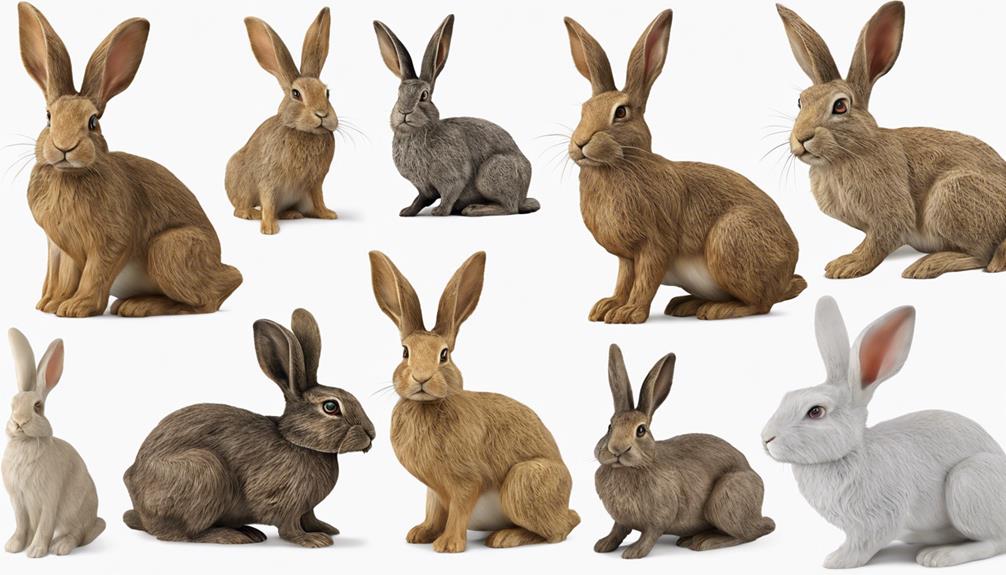
With longer ears and larger feet, hares generally exhibit a size difference compared to rabbits, highlighting distinct physical characteristics in these two species. Hares have a unique skull structure optimized for speed, allowing them to rely on their powerful hind legs for running. Their kinetic skull structure enables forward and backward movement of their jaw, contributing to their agility.
In contrast, rabbits typically have a compact body structure suited for burrowing and living underground. Rabbits excel in utilizing their burrowing abilities for protection, while hares have adapted for speed and agility in open habitats. This difference in anatomy reflects their distinct evolutionary paths and ecological adaptations within the lagomorph species.
While rabbits are specialized for burrowing, hares are built for speed, emphasizing their diverse survival strategies. Understanding these physical variances sheds light on the fascinating adaptations of hares and rabbits to their respective habitats and lifestyles.
Habitat and Living Behaviors
Inhabiting diverse environments, hares and rabbits showcase distinct behaviors and preferences in their choice of habitats and living practices.
- Hares opt for open areas such as prairies for their habitat, where they create nests in small open depressions for shelter.
- On the other hand, rabbits prefer habitats with trees and shrubs, residing in burrows that they dig into the soil to seek protection.
- Hares are renowned for their exceptional running abilities, often staying above ground to swiftly evade predators, while rabbits rely on their burrows for safety.
- Rabbits exhibit a tendency to freeze when faced with danger, a behavior that contrasts with the evasive running strategy of hares.
These differences in habitat choice and living behaviors highlight the unique adaptations of hares and rabbits to their respective environments, underscoring how their distinct lifestyles contribute to their survival in the wild.
Reproduction and Offspring
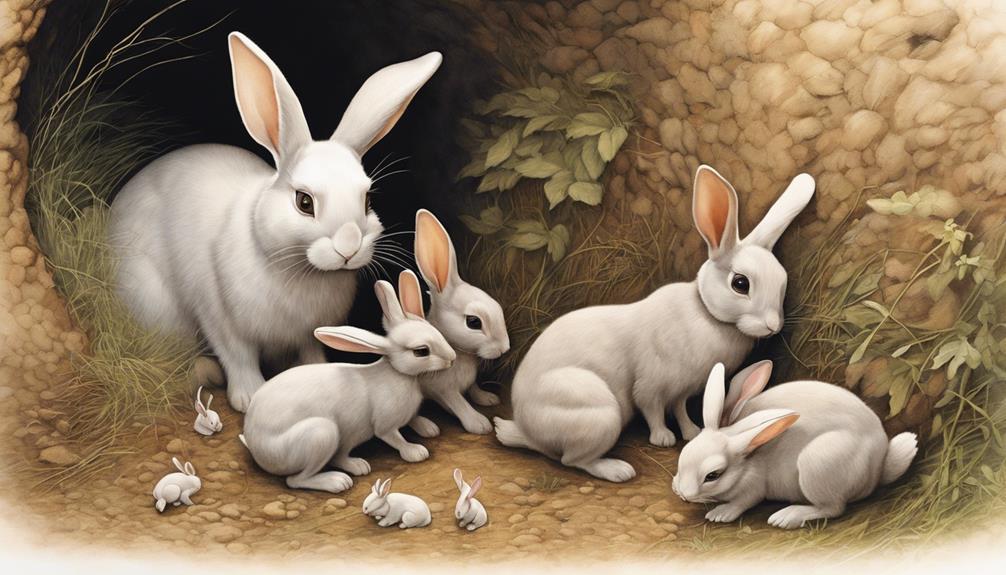
Preferring distinct habitats and exhibiting varying parental care strategies, hares and rabbits demonstrate notable differences in their reproductive processes and offspring development.
Hares have a longer gestation period of around 42 days, while rabbits gestate for 30-31 days. When comparing offspring, baby hares are born fully furred and with open eyes, equipped to fend for themselves right from birth.
In contrast, newborn rabbits are born blind, deaf, and entirely dependent on parental care. Hares' offspring are more self-sufficient at birth, needing minimal care compared to rabbits. Rabbits, on the other hand, invest significant effort into caring for their young until they're prepared to survive independently.
These distinctions in offspring development highlight the contrasting parental care strategies between hares and rabbits, shaping the dynamics of their respective populations in the wild.
Key Behavioral Differences
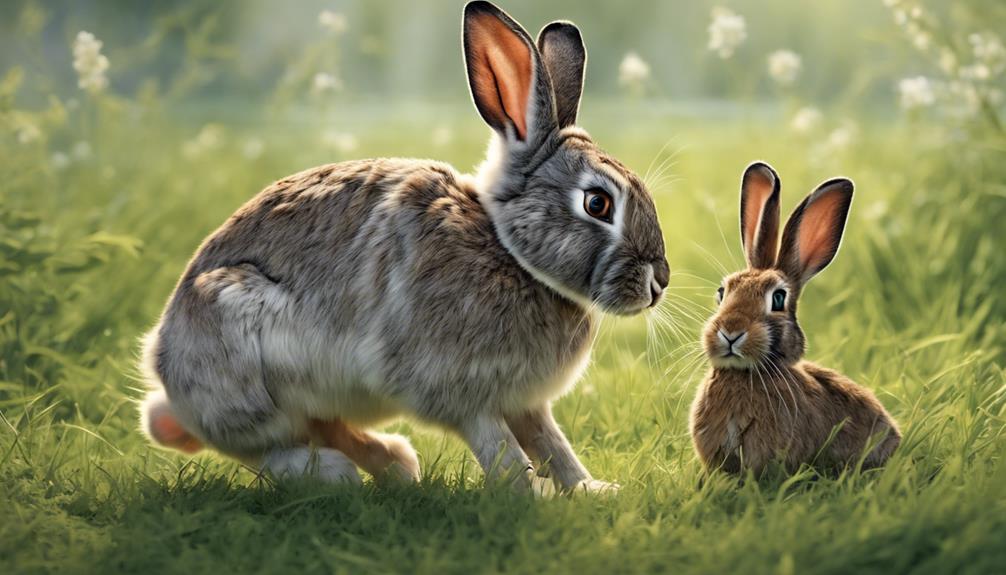
Both hares and rabbits exhibit distinct behavioral differences that shape their survival strategies in the wild.
- Hares rely on their incredible speed and agility to outrun predators, while rabbits utilize their burrows as a primary hiding place when threatened.
- Rabbits are social animals, often living together in family groups within warrens, whereas hares are solitary creatures that prefer to spend their time alone.
- Hares create nests in shallow depressions in open habitats like prairies, while rabbits opt for underground burrows for protection and shelter.
- When it comes to offspring, rabbits give birth to vulnerable newborns that are blind, deaf, and dependent on parental care, whereas hares have precocial young born with fur and open eyes, capable of fending for themselves from the moment they enter the world.
These behavioral differences between hares and rabbits are essential adaptations that enable each species to thrive in their respective environments, whether in arid landscapes or more temperate regions.
Frequently Asked Questions
What Is the Difference Between a Bunny Rabbit and a Hare?
Sure! We can clarify that a bunny is a term often used colloquially for a rabbit, while a hare denotes a separate species. Hares are generally larger, have longer ears, and are born more developed than rabbits.
What Is the Difference Between Bunny and Rabbit?
Oh, the eternal question – what sets a bunny apart from a rabbit? Well, let's break it down. Bunnies are just rabbits, but the term "bunny" often adds a sprinkle of cuteness to the mix.
What Are the Differences Among Rabbits Hares and Pikas?
Hares, rabbits, and pikas differ in size, habitat preference, social behavior, and reproductive strategies. Hares are solitary, preferring open spaces, while rabbits live in groups and dig burrows. Pikas are small, territorial mammals living in rocky areas.
What Are the Features of Hares and Rabbits?
Hares boast larger size and longer ears compared to rabbits. They're born with fur and open eyes, ready for independence. In contrast, rabbits are smaller, born hairless, blind, and deaf. Hares prefer open grassy areas, while rabbits favor burrows.
How can I tell if my rabbit has been poisoned and what should I do about it?
If you suspect your rabbit has been poisoned, look for common symptoms such as lethargy, loss of appetite, or seizures. If you notice any of these signs, take immediate steps for animal poisoning by contacting a veterinarian or animal poison control hotline for guidance on how to proceed.
Conclusion
To sum up, it's fascinating to learn about the subtle nuances that distinguish bunnies, rabbits, and hares.
While they may appear similar at first glance, their distinct physical characteristics, habitats, and behaviors set them apart in the animal kingdom.
Observing these creatures in their natural environments can provide a deeper appreciation for the diversity of life on our planet.
